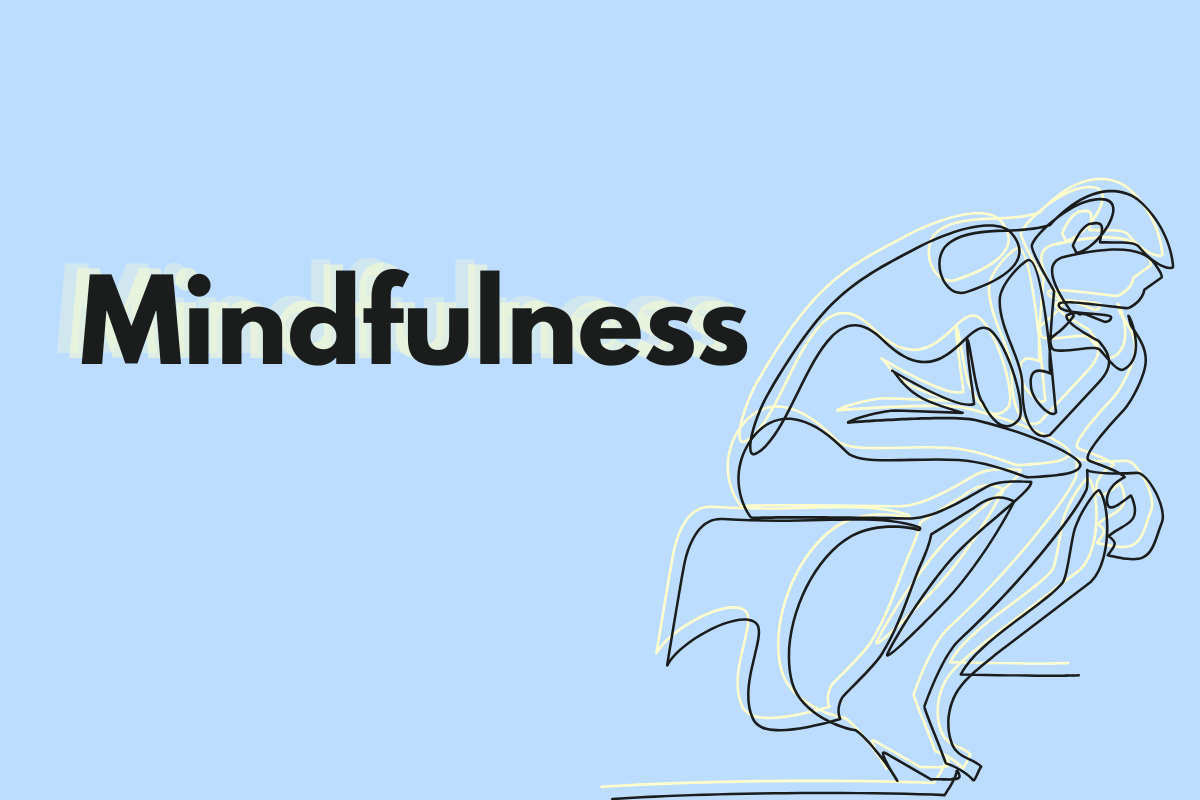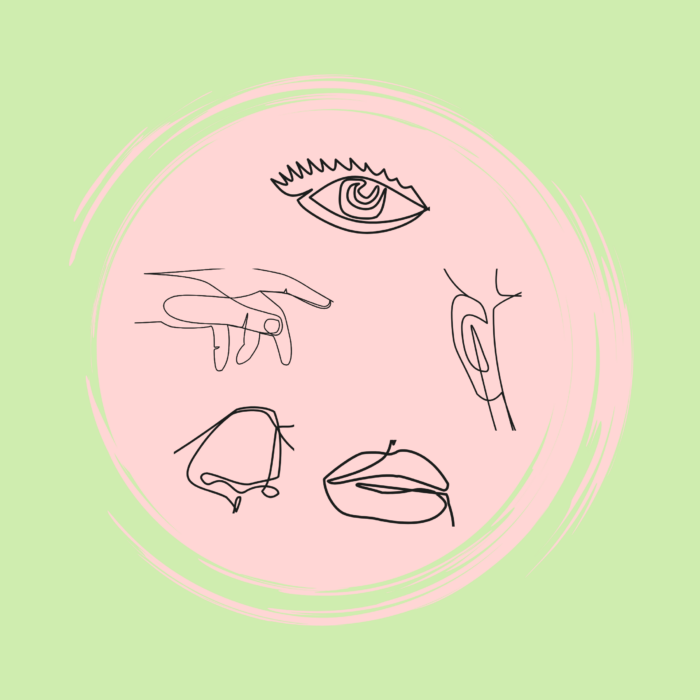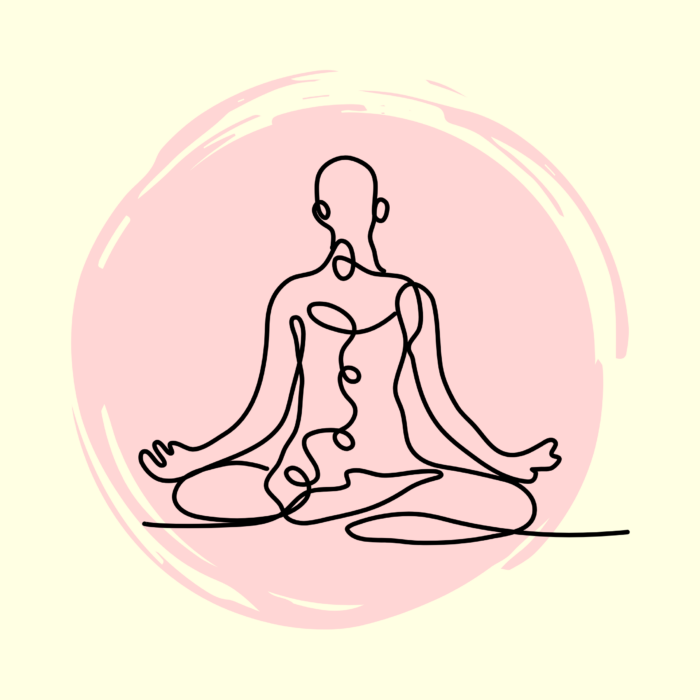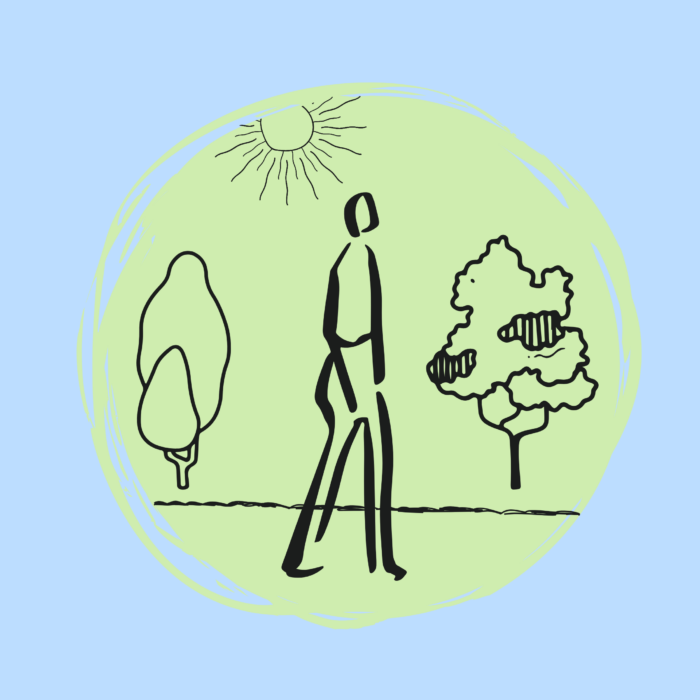
What is Mindfulness?
Mindfulness is the act of living in the present, by taking notice of and appreciating the present moment.
There is a lot of evidence of the benefits of mindfulness for your mental health and emotional wellbeing. In fact, mindfulness is a key part of “Take Notice”, one of the 5 Ways of Wellbeing. It can help you feel better if you are feeling anxious or overwhelmed, and can even improve your mood generally through regular practice.
You can practice mindfulness by engaging in mindful exercises that can be as short as a few breaths, and by incorporating mindfulness into your regular routine you can live mindfully and feel all the benefits!
Want to try mindfulness for yourself? Read on for our top mindfulness tips…

Mindfulness tip no. 1
Take notice of your surroundings.
Take the time to really pay attention to where you are and the things that surround you. Use all of your senses: Sight, Sound, Touch, Smell and Taste.
By focusing on your senses and surroundings, you are grounding yourself to the present moment. This allows you to slow down and appreciate the present, and take charge of any worries and negative thoughts you may have.
Here are a couple of mindfulness exercises that can help you take notice of your surroundings:

Mindfulness Exercise no. 1:
5 Things, 5 Senses
Take notice of your surroundings with all your senses, and find one thing for each:
Something you can SEE
Something you can FEEL
Something you can HEAR
Something you can SMELL
Something you can TASTE
For example, you could see clouds drifting through the sky, feel the sun on your face, hear birds singing, smell woodsmoke on the breeze, and taste a sweet you’re chewing on.

Mindfulness Exercise no. 2:
Explore an object
Find something in your surroundings you find interesting, or even something completely uninteresting, and explore it with as many senses as possible:
What does it LOOK like?
What does it FEEL like?
What does it SOUND like?
What does it SMELL like?
What does it TASTE like?
For example, you could explore a tree outside. Look at how it’s branches and boughs grow outwards. Feel the texture and irregularities in its bark. Listen to the wind rush through its leaves. Smell the fragrant woody smell it gives off. If it has edible fruit, like apples or plums, you could even taste them!

Mindfulness tip no. 2
Take notice of your thoughts
Practise observing how you feel and what you are thinking at any one time.
By focusing on your thoughts in this way, you become more aware of yourself in that moment. This gives you insight to how and why you feel the things you do, gives you more control over your thoughts, and allows you to start making yourself feel better.
These mindfulness exercises can help you practice taking notice of your thoughts:

Mindfulness Exercise no. 3:
Thought-watching
Set aside some time for yourself for this exercise, and make yourself comfortable without distractions.
While sitting quietly, take notice of your thoughts, and observe them passing through your mind.
Don’t focus too much on any one thought, but don’t push them away either. Let them come and go, acknowledging each one.
It’s a little like being in the park watching birds flying overhead, or sitting in the back seat of a car watching the world pass by the window.

Mindfulness Exercise no. 4:
Name your thoughts
This is something you can do when you’re next observing your thoughts, perhaps as part of another mindfulness exercise or during a quiet moment.
Try and describe the thoughts you’re observing. Without judgement, and being as objective as you can, describe what these thoughts are and how they affect you.
Sum up these observations by giving your thoughts a name.
For example, while going about your day, I could have a “what’s for dinner thought”, an “embarrassing memory thought” or “what if dragons were real thought”.

Mindfulness tip no. 3
Take notice of your body
Take the time to just exist in your body, becoming aware of what it’s doing and how it relates to the world around you.
Being aware of your body in this way can make you feel more relaxed and grounded, and make you feel more present in the here and now. These techniques can be incorporated into other mindful exercises, tried just before going to sleep, and can be really helpful if you feel overwhelmed or stressed.
Here are a couple of mindful exercises that can help you learn to take notice of your body:

Mindfulness Exercise no. 5:
Mindful Breathing
Set aside some time for yourself, and find a spot to practice where you’re comfortable and won’t be distracted.
Sit up in your seat, feet on the ground, hands in your lap. Close your eyes, or keep them open but unfocused.
Take a breath through your nose, slowly and deeply. Feel the air fill your lungs, and your chest and belly expand. Hold the breath there for a moment.
Breathe out through your mouth, slowly allowing the air to escape your lungs. Feel how the air feels leaving your body.
Focus on your breathing. Allow your thoughts and feelings to come and go, and take notice of your body and surroundings. But always come back to your breathing.
Take as long as you need. This could be for 10 minutes, 1 hour or even just a few breaths.

Mindfulness Exercise no. 6:
Body Scan
Set aside some time for yourself, and find a spot to practice where you’re comfortable and won’t be distracted. You can do this exercise standing, sitting or lying down.
Focus on each part of your body in turn, and make yourself aware of how they feel. Notice little things, like how furniture gently presses against you, how air brushes against your face, or even just how heavy each part feels. As you travel down your body, look for tension, then consciously tense and relax each part, until your whole body is relaxed.
Start at the top of your head, at your scalp, then journey down to your face, taking particular notice of your eyes, nose and mouth as you go.
Move on down past your jaw to your neck, circling round and down to the back of your neck. Travel across your shoulder blades, on to your shoulders.
Scan down your arms, passing your biceps, elbow and forearms, all the way down to the tips of your fingers
Head back up to your torso. Feel how your chest and tummy move in and out when you breath. Travel down your spine, vertebra by vertebra, until you reach the small of your back.
From your hips, move down your legs. Feel your thighs, your knees, your calves and your ankles, all the way until you reach the tips of your toes.

Mindfulness Tip no. 4 Create a Mindful Routine
Mindfulness can be really helpful in the moment, especially if you’re struggling with stress or anxiety. But, you can take that benefit and make it last much longer, by practicing mindfulness regularly.
You can do this by building yourself a mindful routine:
Find a regular time to practice mindfulness.
Choose an exercise that resonates with you, and put aside time in your schedule to practice it regularly. This can be as little as 2 minutes every week if that’s all you have time for, or it can but half an hour every day if you really get into it.
Make your everyday mindful.
Mindfulness doesn’t have to done as specific set exercises. You can incorporate mindfulness into everyday activities. Next time you go for a walk, leave your distractions at home and take notice of your surroundings. For example, when you’re doing mundane household chores, like washing up or hanging out laundry, allow yourself to observe your thoughts in an mindful way.
Here are a couple of examples of living mindfully you can try:

Mindfulness Exercise No. 7:
Mindful Walking
Find a place you like to walk, and give yourself plenty of time to wander. This could be somewhere in nature, or up and down your street. It could even be a regular walk you do, like your route to work, school or the shops.
When you’re walking…
Take notice of your surroundings. Of trees, cars and other people walking. Of the sights and sounds and smells of the things around you.
Take notice of your body. Of your feet on the ground, the movement of your limbs. Notice your breathing, and how the wind or sun feel on your face.
Take notice of your thoughts. Of the ideas that pass through your head, the feelings and associations conjured by the walk. Notice them pass through your mind, then bring yourself back to the present.

Mindfulness Exercise No. 8:
Mindful Eating
Give this a go the next time you’re eating a meal, having a snack or even drinking a cup of tea.
Put aside all distractions, like your phone or the TV, and just focus on the food in front of you. Allow yourself to take your time while eating, to really get the most out of it.
Use all your senses to appreciate your food. Enjoy the aroma of the food before eating it. Listen to the sound it makes when you put it in your mouth, and pay attention to how its texture feels when you chew and swallow it. Notice how it looks before you eat it, and how its appearance changes while eating.
Most of all, think about how it tastes. Notice the big flavours it has. Is it sweet, salty, savoury, sour or bitter? Or a combination of all of them? Pay attention to subtler flavours, or the effect of spices and seasonings. Can you pick out all the ingredients just by tasting it? Think about the effect all these flavours have. Is it fresh and zingy, or warm and comforting, or spicy and moreish?
When you’ve finished eating, spend some time reflecting on how you feel. Did you enjoy your food? Do you feel full and satisfied? Do you have more energy now?
The more you do, the easier it will get, and the more you’ll feel the benefit.
Back to Online Resources
